Abstract
A quantitative determination was made every 2 months for a year of the microflora of beef cattle waste and runoff at a medium-sized midwestern feedlot. Counts were obtained for selected groups of organisms in waste taken from paved areas of pens cleaned daily and, therefore, reflect the flora of raw waste. Overall, in terms of viable count per gram dry weight, the feedlot waste contained 1010 total organisms, 109 anaerobes, 108 gram-negative bacteria, 107 coliforms, 106 sporeformers, and 105 yeasts, fungi, and streptomycetes. The specific numbers and pattern of these groups of organisms varied only slightly during the study in spite of a wide variation in weather. Data indicate that little microbial growth occurs in the waste as it exists in the feedlot. Runoff from the pens contained the same general population pattern but with greater variation attributable to volume of liquid. Comparable determinations of an associated field disposal area (before and after cropping), stockpiled waste, and elevated dirt areas in the pens indicate that fungi, and especially streptomycetes, are the aerobic organisms most associated with final stabilization of the waste. Yeasts, which are the dominant type of organism in the ensiled corn fed the cattle, do not occur in large numbers in the animal waste. Large ditches receiving runoff and subsurface water from the fields have a population similar to the runoff but with fewer coliforms.
Full text
PDF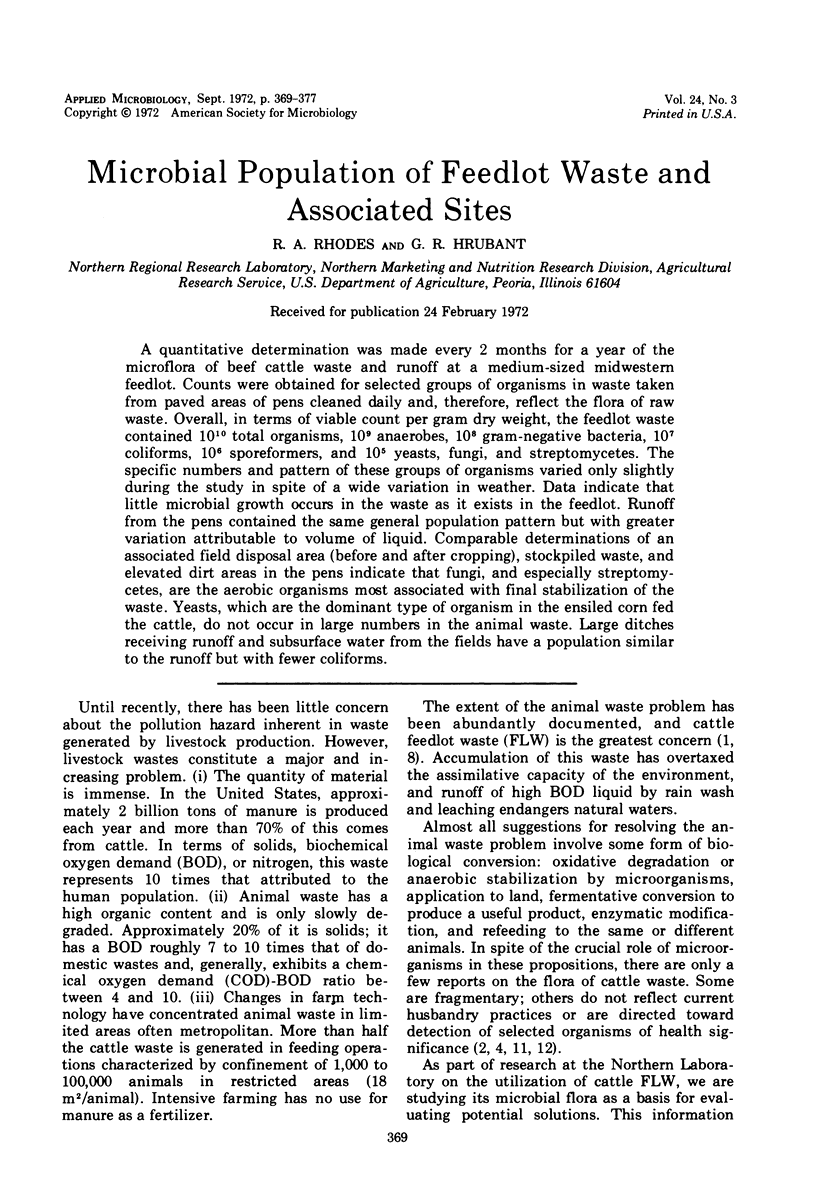
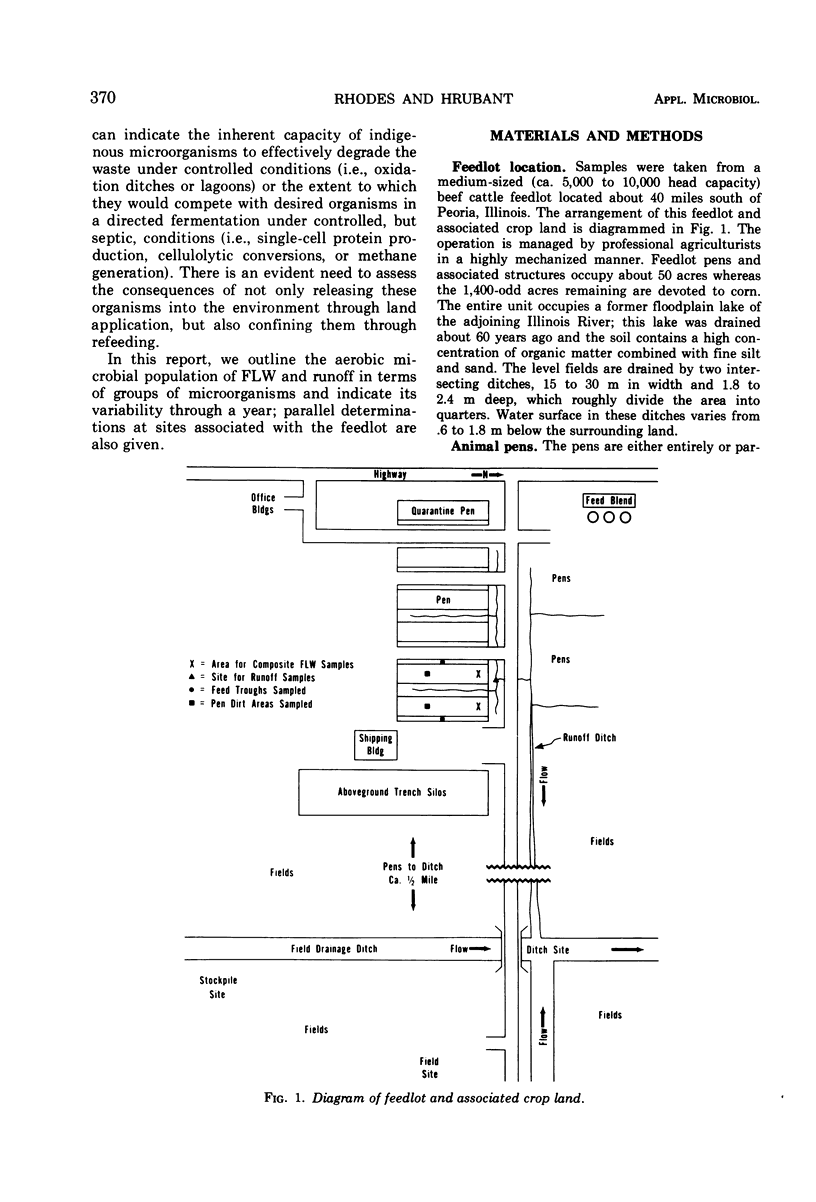
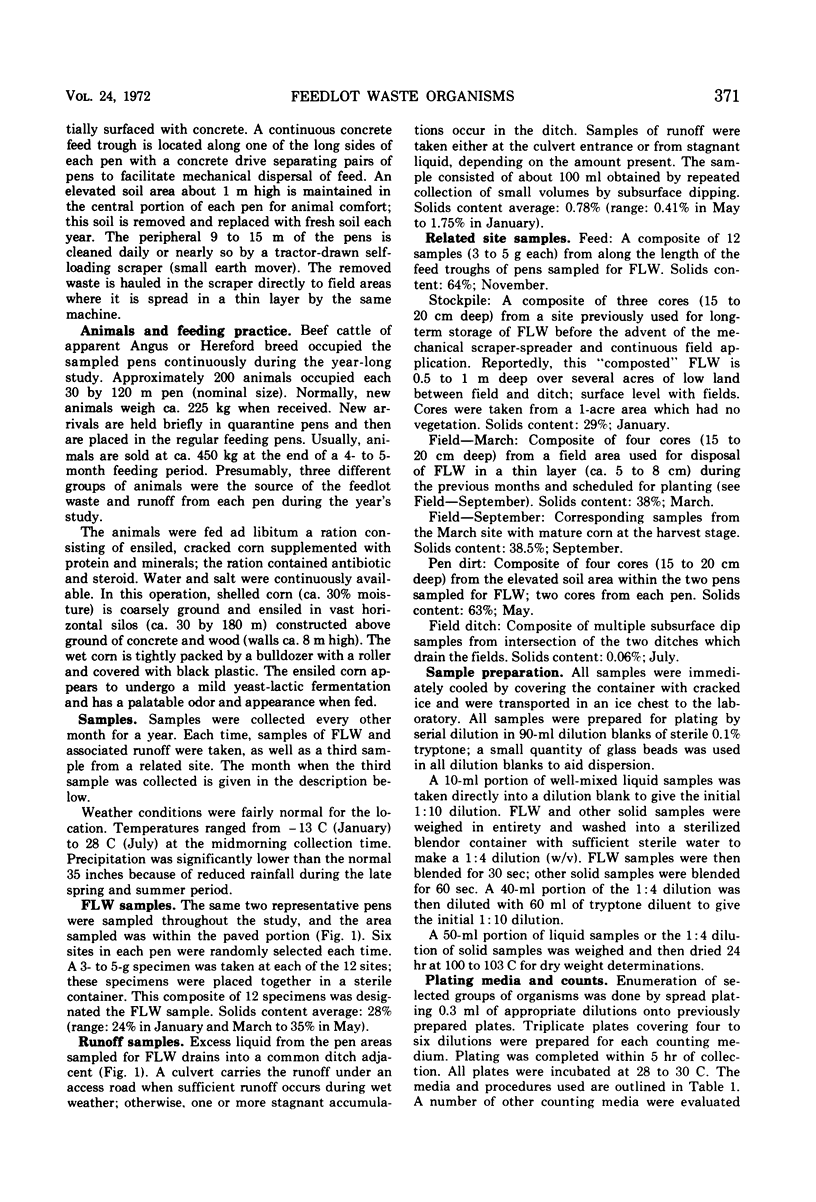
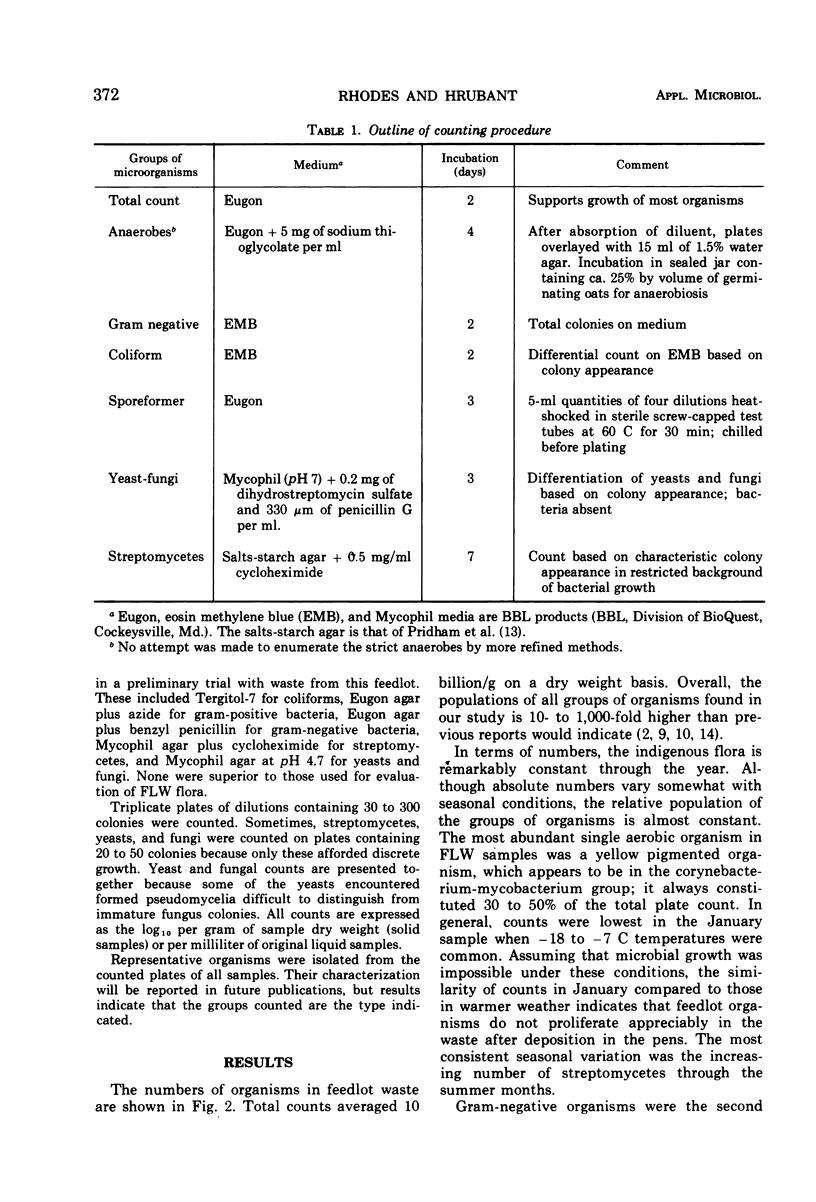
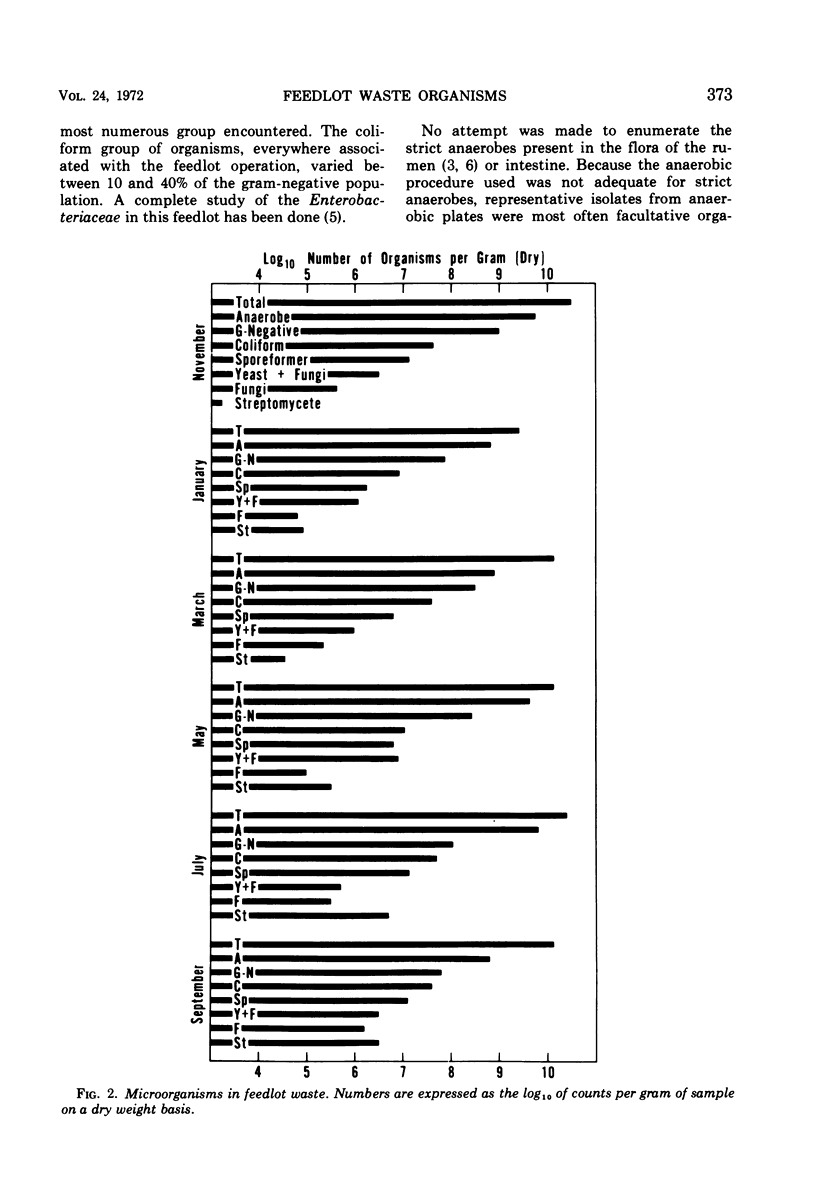
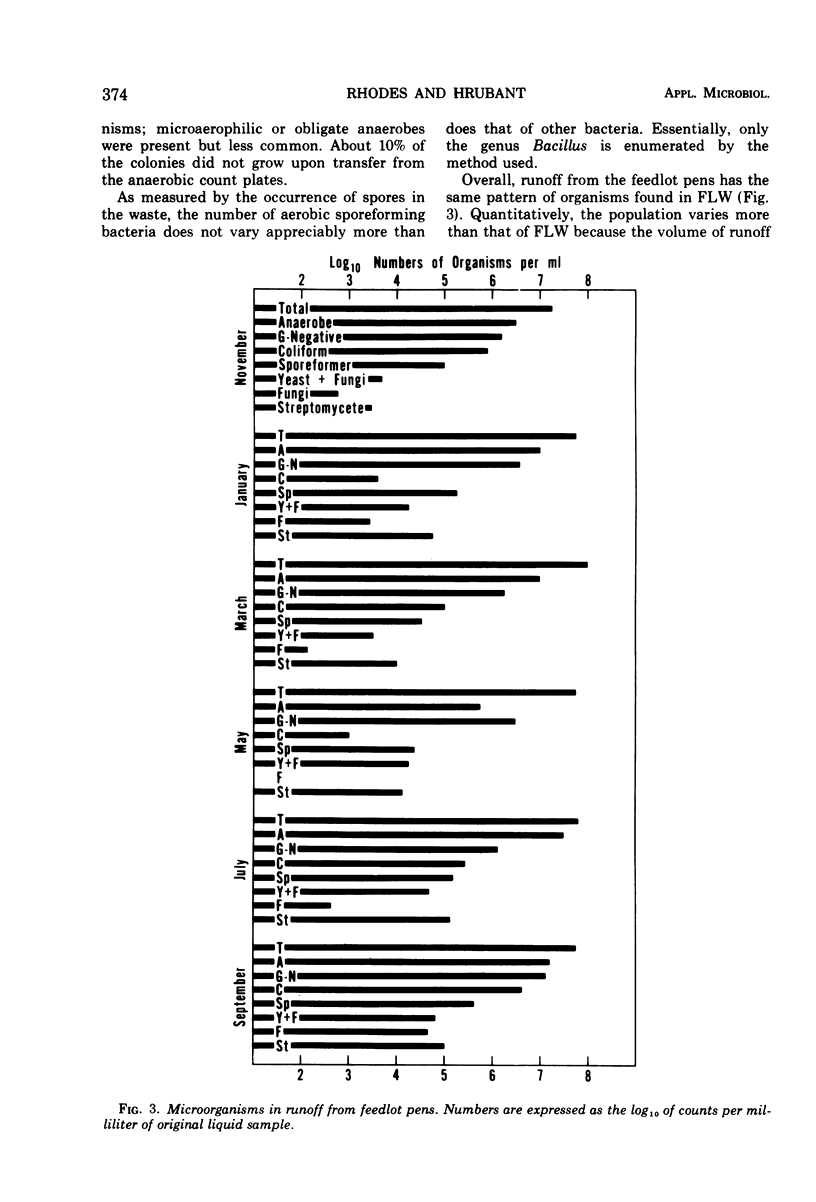
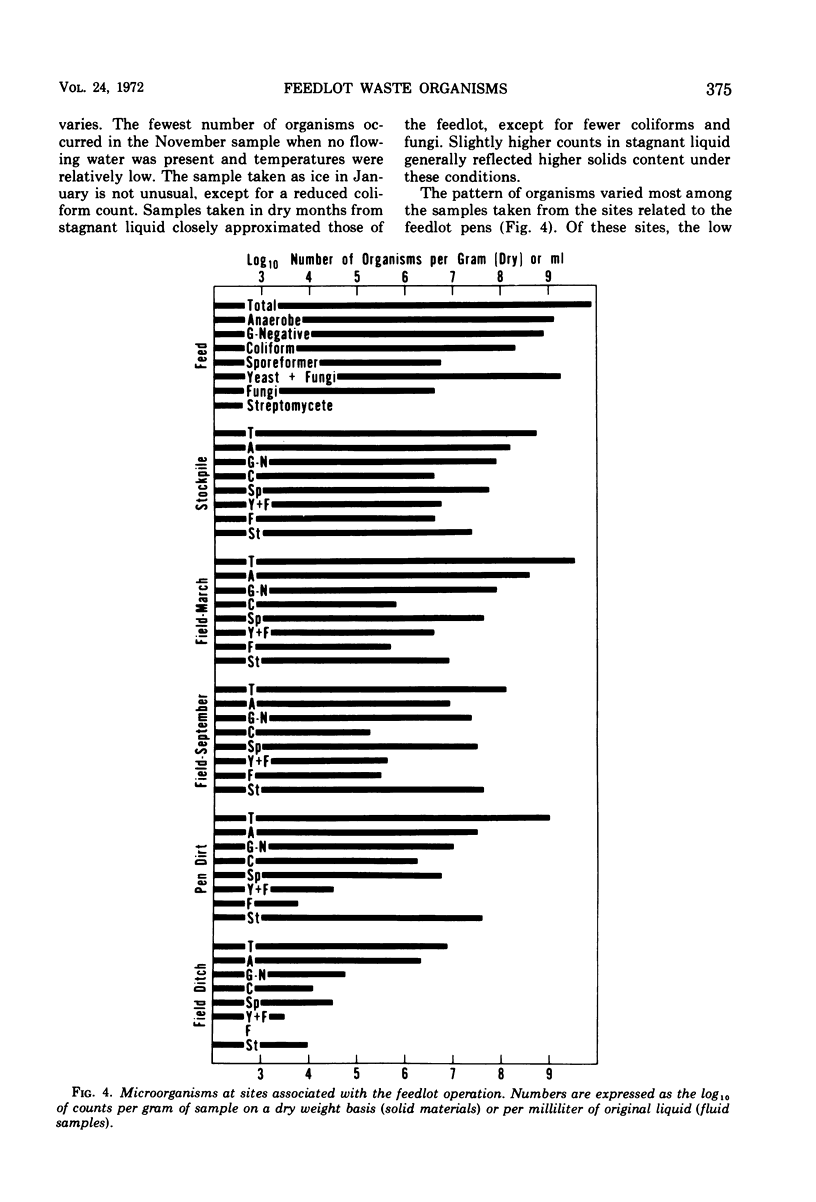
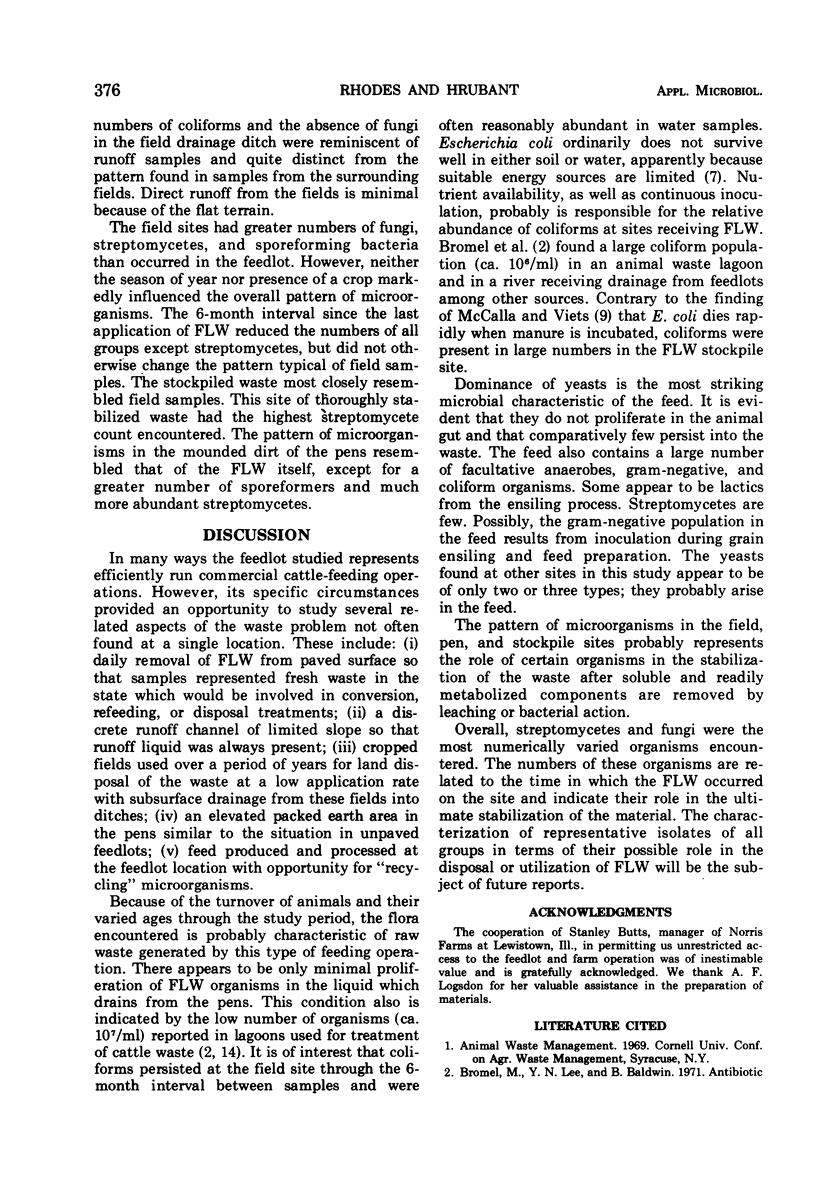
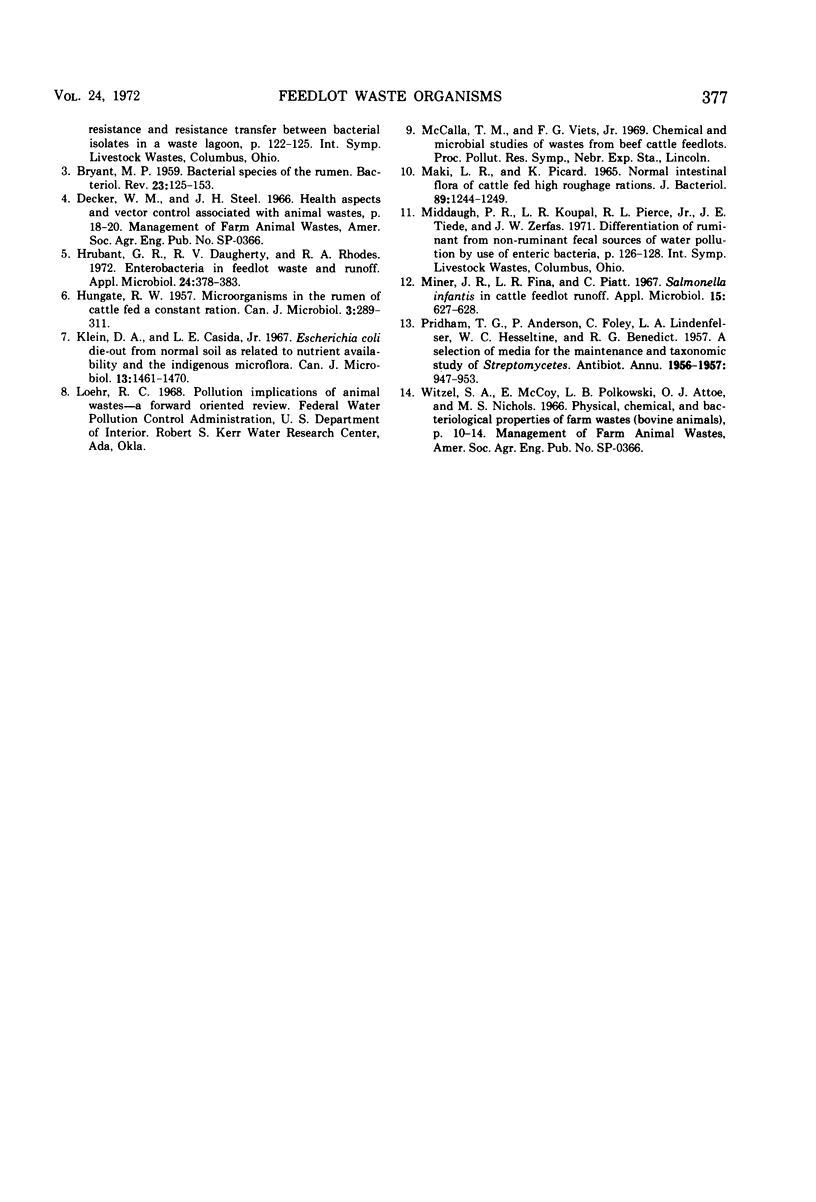
Selected References
These references are in PubMed. This may not be the complete list of references from this article.
- BRYANT M. P. Bacterial species of the rumen. Bacteriol Rev. 1959 Sep;23(3):125–153. doi: 10.1128/br.23.3.125-153.1959. [DOI] [PMC free article] [PubMed] [Google Scholar]
- HUNGATE R. E. Microorganisms in the rumen of cattle fed a constant ration. Can J Microbiol. 1957 Mar;3(2):289–311. doi: 10.1139/m57-034. [DOI] [PubMed] [Google Scholar]
- Hrubant G. R., Daugherty R. V., Rhodes R. A. Enterobacteria in feedlot waste and runoff. Appl Microbiol. 1972 Sep;24(3):378–383. doi: 10.1128/am.24.3.378-383.1972. [DOI] [PMC free article] [PubMed] [Google Scholar]
- Klein D. A., Casida L. E., Jr Escherichia coli die-out from normal soil as related to nutrient availability and the indigenous microflora. Can J Microbiol. 1967 Nov;13(11):1461–1470. doi: 10.1139/m67-194. [DOI] [PubMed] [Google Scholar]
- MAKI L. R., PICARD K. NORMAL INTESTINAL FLORA OF CATTLE FED HIGH-ROUGHAGE RATIONS. J Bacteriol. 1965 May;89:1244–1249. doi: 10.1128/jb.89.5.1244-1249.1965. [DOI] [PMC free article] [PubMed] [Google Scholar]
- Miner J. R., Fina L. R., Piatt C. Salmonella infantis in cattle feedlot runoff. Appl Microbiol. 1967 May;15(3):627–628. doi: 10.1128/am.15.3.627-628.1967. [DOI] [PMC free article] [PubMed] [Google Scholar]
- PRIDHAM T. G., ANDERSON P., FOLEY C., LINDENFELSER L. A., HESSELTINE C. W., BENEDICT R. G. A selection of media for maintenance and taxonomic study of Streptomyces. Antibiot Annu. 1956:947–953. [PubMed] [Google Scholar]


